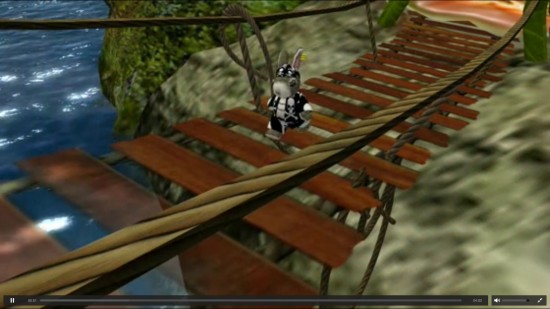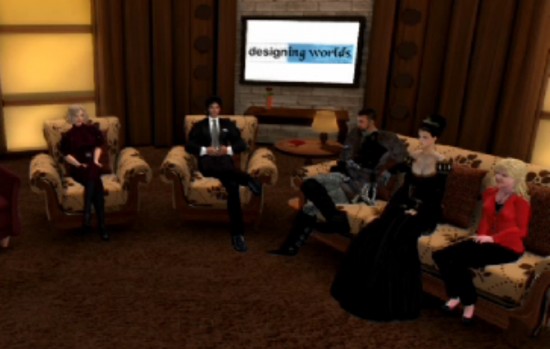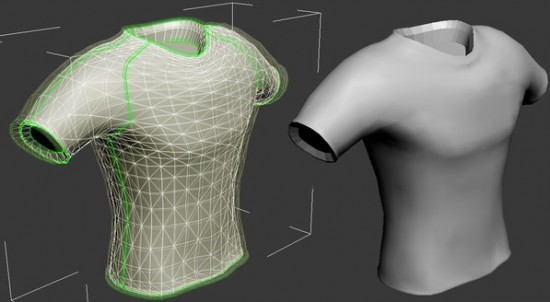I was recently a guest on Designing Worlds, discussing virtual projects that got real money from Kickstarter — or are trying to.
Fellow guests included  Zayn Till and Wynx Whiplash, Tinies from Raglan Shire, who just successfully raised $11,112 on Kickstarter for their JazzPaws project, handily exceeding their original goal of $8,500.

Traditionally, people raise money from new businesses by borrowing it, or by giving up a chunk of the company to investors.
With Kickstarter, however, entrepreneurs get to keep all the money raised, and get to keep all the shares of their company. The money is a free gift to get them started — minus a commission to Kickstarter itself.
On average, around 45 percent of all Kickstarter projects get funded. The rest don’t reach their funding goals and get no money at all — folks who pledge money to a project are only charged if the project reaches its full funding goal.

Many projects exceed their goals, as well. For example, the Pebble smartwatch project raised more than $10 million — even though they were originally only shooting for $100,000.
Kickstarter is the most famous of the crowdfunding sites, but there are others as well.
For example, Karl Stiefvater — formerly Qarl Linden — raised $5,555 for his Mesh Clothing Parametric Deformer Project on IndieGoGo.

What makes a successful crowdfunding project?
While Qarl and the Tinies met their funding goals, another Second Life-related project, Kirsten’s Viewer, failed to reach its goal of 25,000 UK pounds, or about US $38,000, on CrowdFunder. The goal of the project was to fund development of the viewer for a full year, by providing a salary to lead developer Lee Quick, known as Kirstenlee Cinquetti in-world.
Instead, only about a third of the money was raised, and Quick shut down the viewer.
The differences between Kirsten’s Viewer project, and the successful projects, are very informative for anyone looking to raise funding by this method.
Clear scope and goal
People give money to things that they can easily understand, and which offer clear and obvious benefits to either themselves, or some group or cause that they would like to support.
Qarl’s Mesh Deformer project had a very clear goal — to make mesh clothing wearable in Second Life. The benefits were obvious to both those who like to wear clothing, and those who creative mesh clothing for in-world sale.
The project had a well-defined and limited time frame.
The Tinies of Raglan Shire project also had a clear goal — to take intellectual property originally developed inside Second Life and make it accessible to a larger audience. The founders created a video that explained exactly how they were going to do this, and how the money would be used.
By comparison, the Kirsten’s Viewer project was very vague. The money raised would go towards paying for Quick’s time for a year, but it was never explained exactly what the results of this work would be.
In addition to having a tightly-focused scope, it also helps to have a shorter campaign. According to Kickstarter, projects with a deadline of 30 days of less have the highest success rates. This may seem counterintuitive — you’d think that you would be able to raise more money if you had more time. But shorter deadlines help get people motivated, and help the campaign maintain momentum. With a longer deadline, potential funders are tempted to put off their pledges. This, in turn, makes it look like nobody is pledging, which turns off other potential donors.
Give rewards
Sometimes, a successful project is a reward in and of itself, as was the case with Qarl’s Mesh Deformer. Other times, donors may need a little bit more incentive, such as T-shirts, copies of the finished product, or tote bags. Be careful not to spend too much on the rewards, since that wouldn’t leave you with much money to do the project itself. Fortunately, there are plenty of ways to reward your donors in meaningful ways that don’t have to break the bank.
Say, you are raising money for a new grid.
- Digital goods are a great, low-cost way to reward your donors. This includes screensavers of images from your new grid. Clothing relevant to your grid — for example, if you have a role playing grid, you can give out costumes. Or simply T-shirts with the grid logo on them. You can also give out in-world tools, buildings, vehicles and many other types of objects. If you have original music created for your grid, you can distribute sound tracks. Kickstarter forbids coupons or discounts as rewards, so you probably can’t give out virtual currency if it’s redeemable, but a 100 percent fictional currency, like in-game gold coins, would probably work as a reward.
- Creative artifacts. Do you have pen-and-pencil sketches of your builds or of in-game characters or monsters? Make a limited set of prints, and have them signed by the original artist.
- Name recognition. Colleges have long ago learned to put the names of big donors on buildings. Your grid can do the same, naming key venues, buildings, regions, lakes and seas, or even continents after your biggest donors. You can also give out naming rights for in-game characters, quests, valuable items or monsters. And you can always put the donors’ names in the credits on your grid website, in the “About Land” section of your welcome region, or in your custom viewer. Give out titles — “Executive producer,” “Founder,” “Demigod.”
- Participation. Let your donors participate in quest design meetings. Record their voices for in-game characters. Give them seats on the grid governing council.
- Memberships. Does your grid have a premium membership? Give a free lifetime membership to your donors.
- Powers. If you’re creating a role-playing grid, you can give special powers to your top donors, such as the ability to fly in no-fly areas, or to heal from damage twice as fast as anyone else.
- Land. Depending on the size of the donation, you can give a free lifetime homestead parcel or even full region to your funder. When pricing this out, remember that land prices are dropping quickly — a land reward may seem like a big deal to a donor today, but will actually cost your company little over the long term as falling computing prices and on-demand hosting will soon bring land prices close to zero.
Remember to give different reward to donors who donate at different tier levels, and have something for everybody.
According to Kickstarter, projects that don’t have a reward for donors who give less than $20 succeed only 35 percent of the time, while projects that do have a reward at that level succeed 54 percent of the time — a significant difference.
Strong promotion
Promoting a crowd funded project starts with a good video. According to Kickstarter, projects with videos succeed at a much higher rate than those without — 50 percent vs. 30 percent. The company even has some advice for how to make a good video.
Blogs, social networks, and in-world groups are also good channels for promoting a crowd funded projects. You can also buy online ads to promote your project, and get coverage in publications that your potential donors read. Throw a party, hold a press conference.
Give a behind-the-scenes tour of the project in its “under construction” phase. If you do give a tour, make it special — don’t just have people walk across empty regions while you say, ‘this will be here, and that will go there.” Put up sketches, architectural plans, building cranes. Have your guests wear hard hats. Have your artists and writers on-hand for introductions and to answer questions.
Don’t forget to ask your donors to help promote your project. They can blog about it, mention it on Facebook or Twitter, or send emails to friends. If they’re giving you money, after all, they must want your project to succeed.
And keep promoting. Post Facebook status updates and Tweets daily. Continue your outreach efforts to bloggers and in-world groups. Continue to hold events.
For more information about how to create a successful crowd funded project, visit the Kickstarter School.
Which platform is best for you?
Using a well-known crowd funding platform benefits you in two ways. First, it helps expose your project to a wider audience than might have heard about it otherwise. Second, it gives your donors the security of knowing that there’s a structure in place to ensure their money goes where it’s supposed to go.
But it does come at a price. Some companies choose to ask for donations directly on their websites, instead, as
- Best name recognition.
- If you don’t meet you funding goal, you don’t get any money.
- Platform fee is 5% if you meet your goal, no charge if you fail. Plus additional credit card processing charges from Amazon, typically between 3% and 5%.
- Campaigns can be any length from 1 to 60 days.
- Originally started as a place to get independent films funded, and is still strongest in the creative categories — art, comics, fashion, music, film — but also funds video games, technology and small business projects.
- “Flexible Funding” option allows you to keep the money raised, even if you don’t meet your goal. With “Fixed Funding” campaigns, you only get the funding if you meet your goal.
- “Flexible Funding” campaigns can be anywhere between 1 and 120 days. “Fixed Funding” campaigns can be anywhere between 1 and 60 days.
- Platform fee is 4% if you meet your goal, 9% if you fail to meet your goal, plus PayPal or wire transfer fees.
- Popular with projects based in the U.K. and Europe.
- If you don’t meet your funding goal, you don’t get any money.
- Platform fee is 5% if you succeed, no charge if you fail to meet your goal.
- Choice of 30, 45 or 60-day funding campaigns.
Asking for donations on your own website
- No commission or fees to pay out
- No minimum funding level to meet
- No deadlines
- But also, lowest chances of getting funding
- International singers gather on Alternate Metaverse Grid for first annual International Day - April 15, 2024
- OpenSim hits new land, user highs - April 15, 2024
- Wolf Territories rolls out speech-to-text to help the hearing impaired - April 15, 2024
